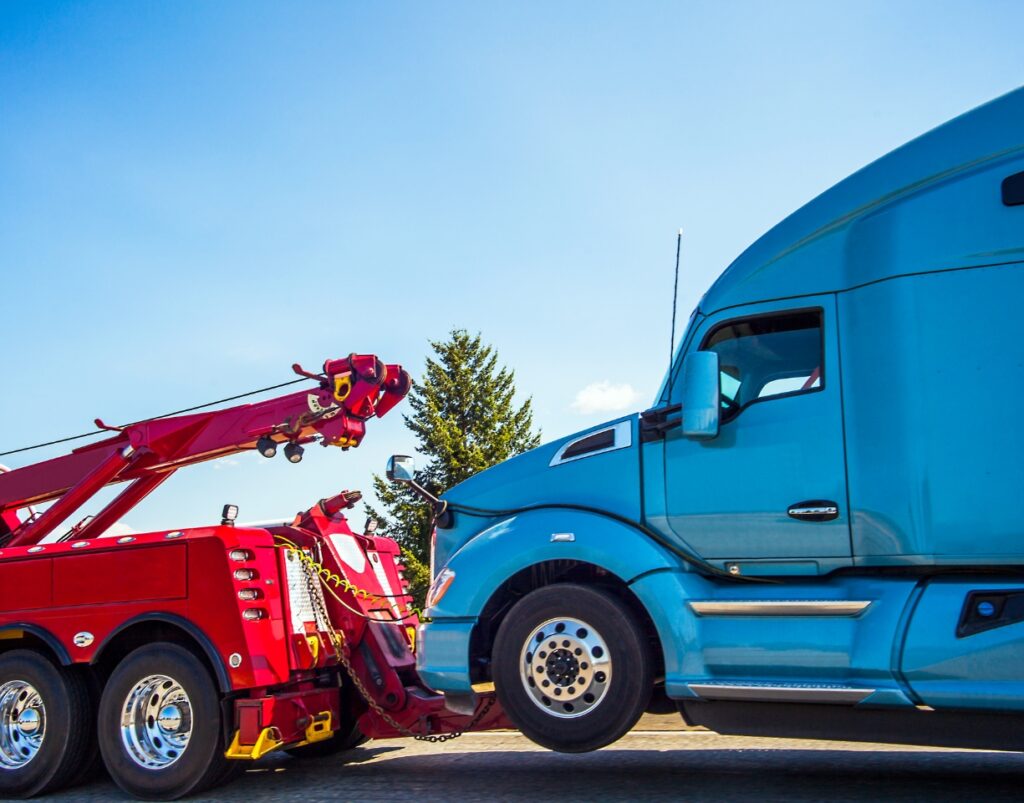Auto Physical Damage
Auto Physical Damage coverage is designed to protect your vehicles from damage resulting from both collision and non-collision incidents. It’s a particularly important coverage for fleet operations, helping businesses avoid significant repair costs and maintain their operations without interruption.
- Collision Coverage
- This coverage applies when one of your vehicles is involved in a collision with another vehicle or an object (e.g., a dumpster, tree, or building).
- In the event of an accident—whether the driver is at fault or not—collision coverage will help pay for repairs or the replacement of your vehicle.
- Example: If one of your waste hauling trucks crashes into a guardrail, this coverage will pay for the damage to the vehicle.
- Comprehensive Coverage
- Comprehensive coverage protects your vehicles from damages that aren’t related to a collision.
- This includes incidents like theft, vandalism, or damage caused by natural disasters (e.g., hailstorms, floods, or earthquakes).
- Example: If a tree falls on one of your trucks during a storm, comprehensive coverage would cover the cost of repairs.
- Glass Coverage
- Glass coverage often falls under comprehensive coverage, providing protection for damage to windows, windshields, or mirrors.
- If your vehicles are involved in vandalism or accidents where the glass is damaged, this coverage can help repair or replace it.
- Example: If a windshield is cracked by debris on the highway, this coverage will typically cover the repair or replacement cost.
- Towing and Labor Costs
- If a vehicle in your fleet breaks down or is involved in an accident, towing coverage can help cover the costs of getting the vehicle towed to a repair facility.
- Additionally, some policies may offer labor coverage, which covers emergency repairs on-site.
- Example: If one of your trucks breaks down on a remote route, towing coverage can pay for the costs to transport it to the nearest shop.
- Custom Equipment Coverage
- If your vehicles have specialized waste hauling equipment or other custom modifications, this coverage ensures those items are protected in the event of damage.
- Example: A specialized lift or a waste compactor is damaged in a collision; custom equipment coverage would help pay for repairs or replacement.
Auto Physical Damage
- Deductibles
- A deductible is the amount an insured is responsible for disbursing out-of-pocket before the APD coverage kicks in. For example, if the deductible is $500 and a truck sustains $2,000 in damage, the insured with pay the first $500, and the insurer will cover the remaining $1,500.
- Policy Limits
- The coverage has a limit, which is the maximum payout the insurer will provide for a claim. For example, if your vehicle is totalled, the insurer will pay up to the actual cash value (ACV) of the truck, minus any applicable deductible.
- Fleet Considerations
- Wholesure Transportation operates a fleet of vehicles, which may include trucks with specific requirements like commercial vehicle insurance or specialized equipment coverage. Depending on the type of vehicles and the scope of operations (e.g., waste hauling or heavy-duty transport), your APD policy may be adjusted to accommodate these needs.
- Optional Add-Ons
- Wholesure Transportation may consider roadside assistance or rental reimbursement coverage for vehicles that are out of service due to accidents or breakdowns. These add-ons help ensure business operations continue with minimal disruption.
- APD coverage is essential to ensure that vehicles and fleets are protected against various risks, especially considering the higher likelihood of accidents, theft, or damage from the nature of transportation operations (e.g., waste hauling, heavy loads, or navigating challenging routes). Without APD, significant out-of-pocket costs for vehicle repair or replacement could severely impact and interrupt trucking businesses.

